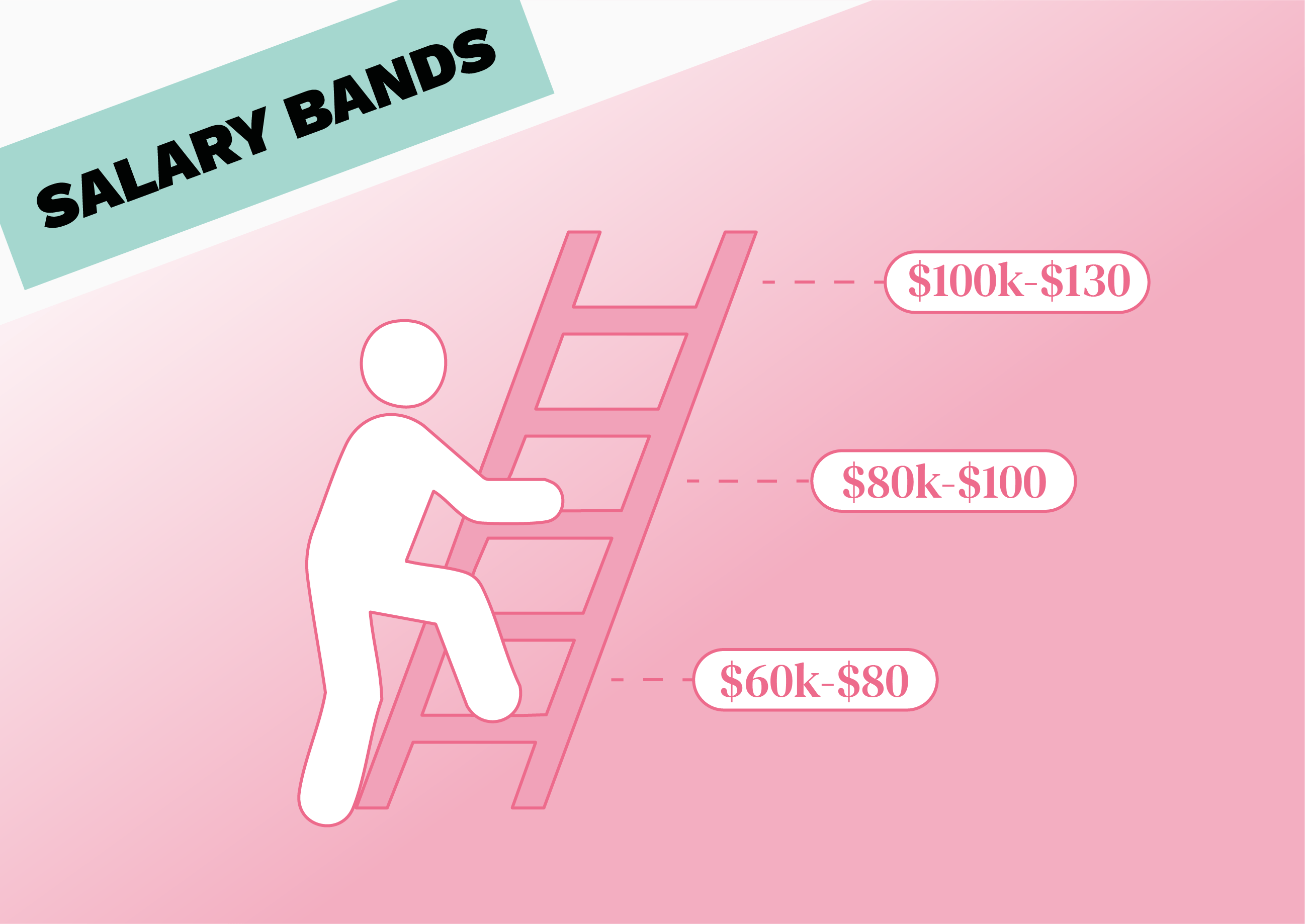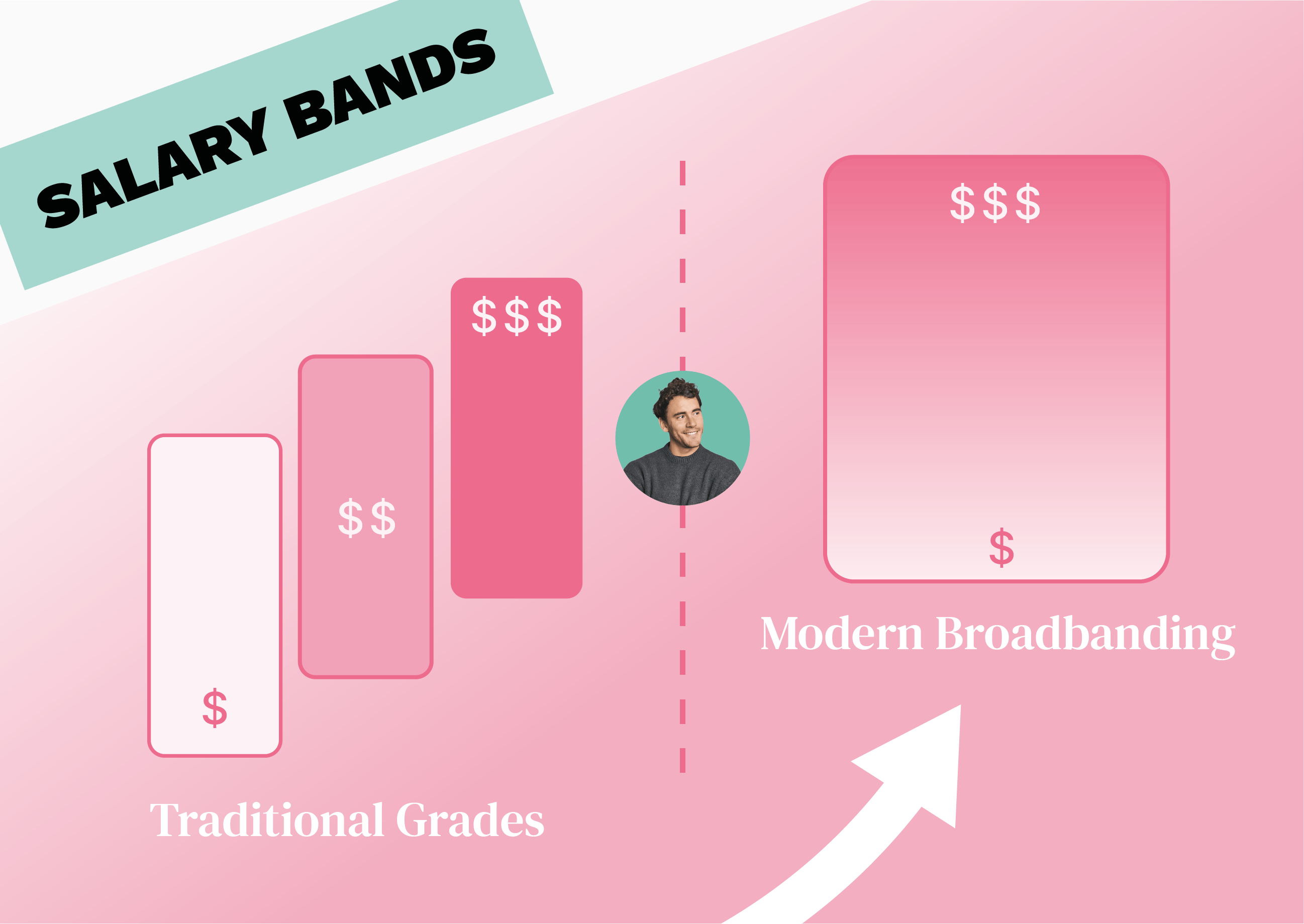We know you care about paying your employees fairly. You wouldn’t be reading this blog if you didn’t. But if your company isn’t yet using salary bands as the basis for your compensation decisions, you could be introducing inequities without even realising it.
After all, without salary bands, pay decisions often involve a lot of guesswork, and may come down to the discretion of individual managers. Even with the best intentions, this can easily lead to pay discrepancies, which can be tricky to identify and correct.
In this article, we’ll dive into exactly why salary bands are the key to ensuring equitable pay — plus why that matters so much in 2024.
What are salary bands?
Salary bands are simply a way of structuring compensation within an organisation. Each band represents the range you’re willing to pay for a particular job at a particular level. You might have a salary band for junior engineers, another one for mid-level engineers and a final one for senior engineers, for example.
Each salary band has a minimum, a maximum and a midpoint. Employers are placed within their band according to their experience, performance rating and other factors. They can then move up within the band, or even into the next one (which usually means a change of role).
Put simply, salary bands are a way of ensuring that each employee is paid according to the work they do — and not at the whim of a particular manager. While there may be some room for discretion within each band, the system ensures that pay is fair and consistent overall.
How salary bands drive equitable pay
You don’t have to look very hard to find the link between salary bands and pay equity. After all, the whole point of salary bands is to provide a framework for pay and progression, guiding managers and HR teams in their decisions and helping to standardise pay across the organisation. Read on for some of the other ways that salary bands can help to fight pay inequity.
Internal inequities are easier to spot
Even with the best of intentions, you might end up with the occasional pay discrepancy. Maybe a particular employee has been looked over for a pay rise and is now below their expected level. Or maybe one manager is more generous than others when it comes to awarding raises — meaning their team is effectively overpaid.
The good news is that when you use salary bands, it’s much easier to identify (and correct) these discrepancies. In fact, a tool like Figures can automatically flag when employees are out of range, and help you to spot wider problems like women being paid less than men within a salary band.
Fairer salary negotiations for new hires
Many companies leave room for at least some level of negotiation when a new hire is brought on board. And using transparent salary bands makes this process much easier on both parties, because both the employer and the employee know what the company is realistically willing to pay for the role.
Using salary bands as the basis for pay decisions also removes the need to ask candidates about their salary history. And, since this practice can perpetuate historical inequities and entrench them over time, this can only be a good thing if your goal is pay equity.
Reduced unconscious bias
Most of the time, pay inequity isn’t down to direct discrimination. A company or a manager might feel they are being totally fair in their decisions — but unconscious bias can easily creep in. For example, studies show that men are often promoted based on potential, while women are expected to prove their worth.
Whatever the reason, unconscious bias can be pretty hard to stamp out. But having a structured salary band system in place removes the need for too much manager discretion, which means unconscious bias plays less of a role in pay decisions. And, as we said above, it can also make any existing inequities easier to spot — which is the first step to correcting them.
Why pay equity matters
Paying employees fairly is a key part of every company’s social responsibility. And it can also have a tangible impact on a company’s bottom line. For example, companies who ensure they pay their employees fairly can:
- Avoid costs associated with lawsuits
- More easily attract and retain talent
- Improve productivity and job satisfaction
Plus, in 2024, pay equity is no longer just a nice-to-have. In Europe, the EU pay transparency directive will come into effect by June 2026 — less than two years away at the time of writing.
Once the directive is in force, companies will need to provide more transparency around compensation to both employees and candidates and will be subject to fines and other consequences if they’re found to be paying employees unfairly. They’ll also need to show they have fair, unbiased and consistent systems for determining pay — and salary bands can be a big part of that.
Other benefits of salary bands
Of course, driving pay equity is just one advantage of using salary bands. Here are a few more of the benefits salary bands could bring to your organisation:
- More accurate budget planning: Salary bands make it easier to properly plan for recruitment cycles and pay reviews because the bands you have in place will tell you the maximum you’ll have to spend.
- More efficient recruitment: Including salary bands in your job descriptions gives candidates a realistic idea of what they can expect to earn at your company, while still leaving room for adjustment based on experience, qualifications and more. This means you won’t waste time with candidates whose salary expectations aren’t in line with yours.
- Improved job satisfaction: Employees want to know they’re being paid fairly, and that there’s a clear path for progression. Salary bands show them where they sit in your organisation’s hierarchy and how they can grow within it.
- Simpler admin and communication: Managing pay on a case-by-case basis is simply a lot of work. Salary bands can help to clean up your compensation structure and make things easier to manage by reducing the number of pay ranges and levels you have to keep track of.
The easy way to build and maintain your salary bands
So there you have it: salary bands not only drive pay equity but could improve everything from recruitment to productivity to talent retention for your organisation. But despite all of this, many HR teams are hesitant to explore salary bands, just because of the time and resources that will have to go into creating them.
And it’s true: creating, adjusting and maintaining salary bands is a lot of work — if you don’t have the right tools. With Figures, you can create a robust, scalable salary structure for your entire organisation in minutes (really, we timed it!). You’ll be able to tailor the bands for your specific needs, and get access to instant, actionable data insights to help you make fairer, more informed compensation decisions.
Want to find out more? Sign up for a demo to get started.
Summarize this article with AI
No time to read it all? Get a clear, structured, and actionable summary in one click.






